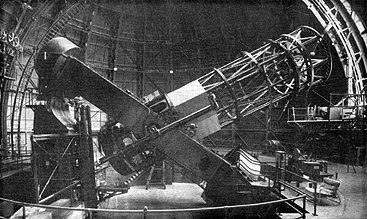Astronomy Picture of the Day
Discover the cosmos! Each day a different image or photograph of our fascinating universe is featured, along with a brief explanation written by a professional astronomer.
July 1, 1995

The Hooker Telescope on Mt. Wilson
Picture Credit: Mount Wilson Observatory